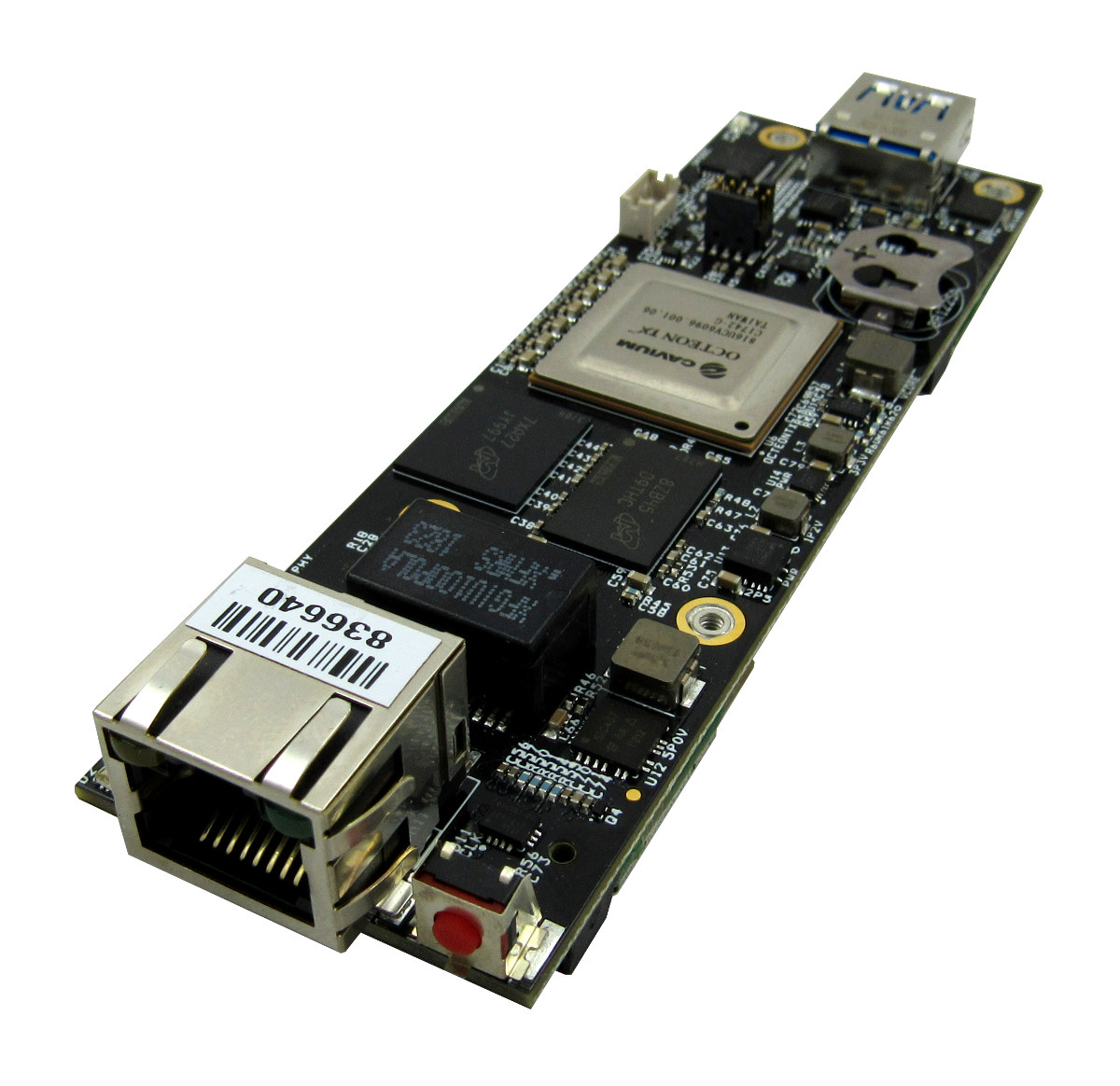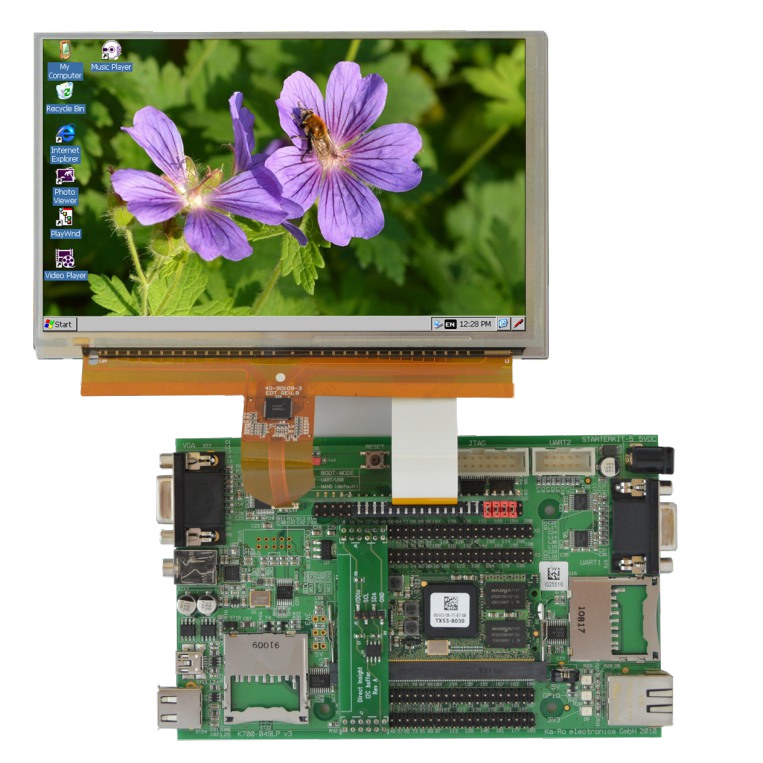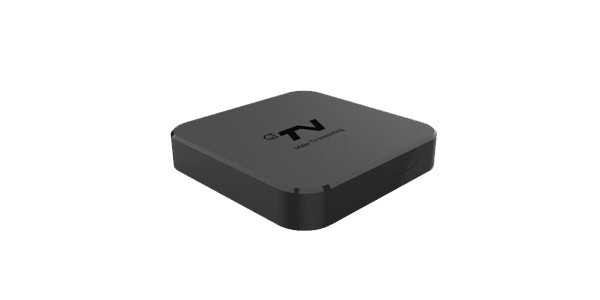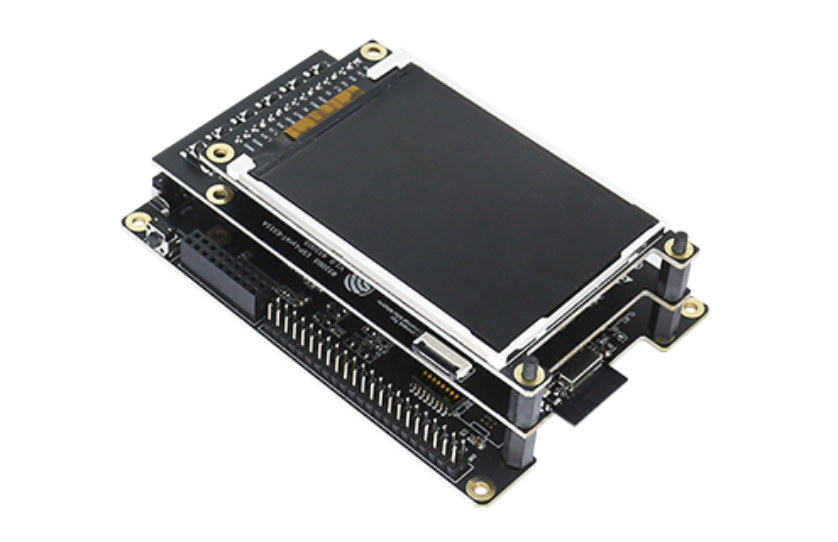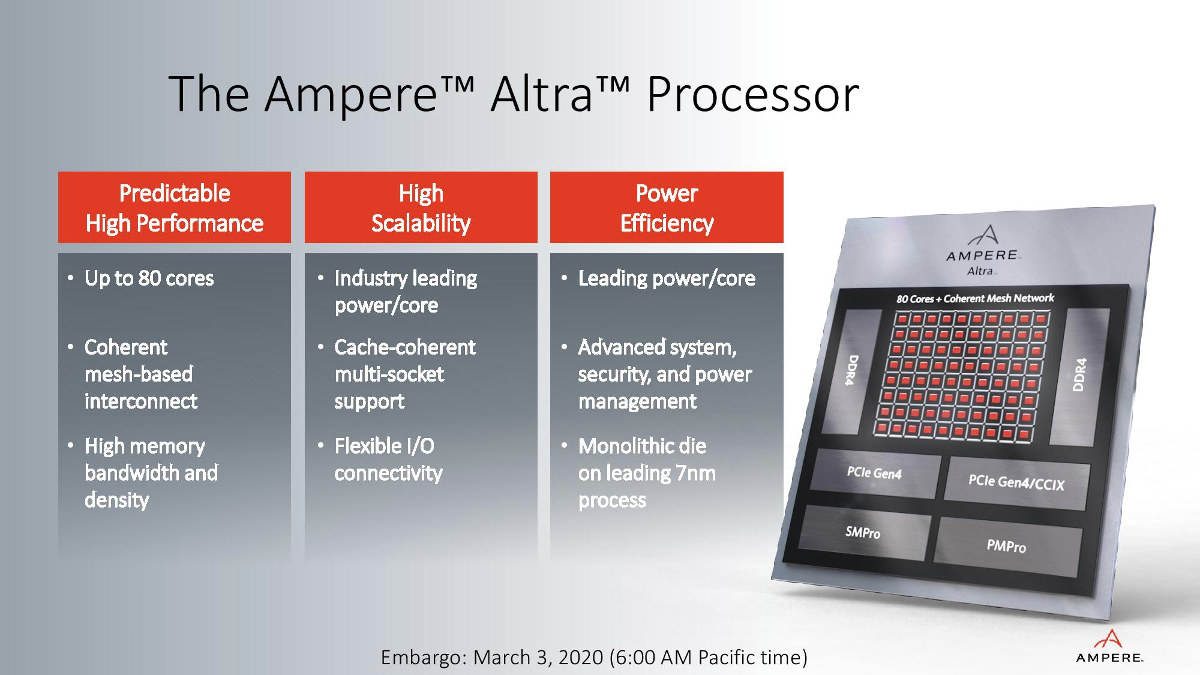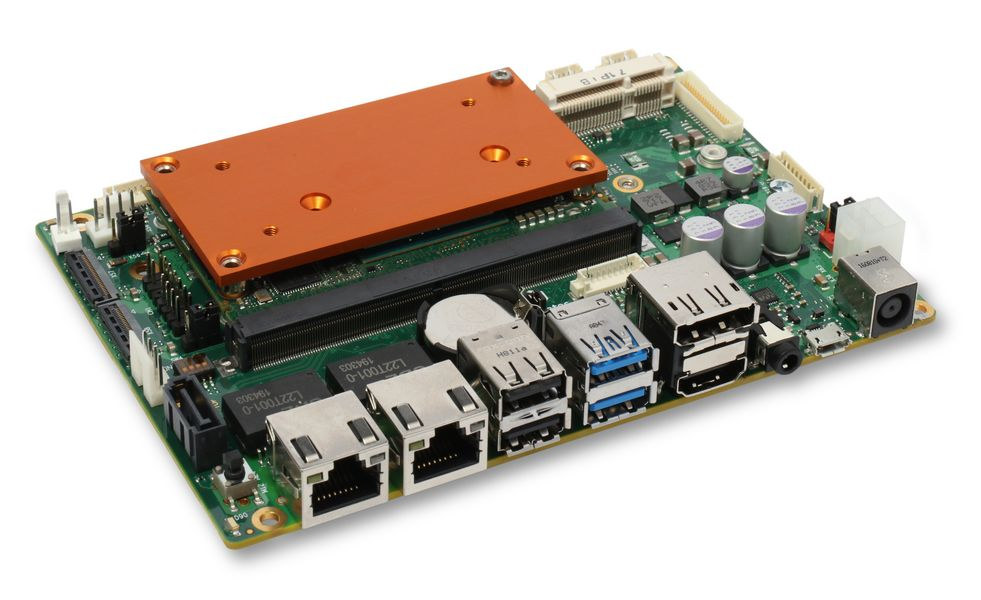Gateworks introduced its Newport SBC family powered by Cavium Octeon TX processors and designed for networking applications in 2017. One of those boards was a compact SBC with one Gigabit Ethernet port, an mPCIe socket, and a USB 2.0 Type-C port. The company has now launched Newport GW6903 SBC with the same 100x35mm form factor but with one Gigabit Ethernet port, two mPCIe sockets, and a faster USB 3.0 Type-A port. Newport GW6903 specifications: SoC – Cavium Marvell Octeon TX CN8120 dual-core Armv8 processor @ 800 MHz or Octeon TX CN8130 quad-core ARMv8 processor @ 1.5 GHz System Memory – 1GB DDR4 SDRAM (Option up to 4GB) Storage – 8GB eMMC flash (Option up to 64GB), serial configuration EEPROM Networking – Gigabit Ethernet Port with Passive PoE Support GNSS – Optional Ublox ZOE-MQ8 GNSS GPS Receiver with PPS support USB – USB 3.0 Type-A host port Expansion 2x Half Card […]
Marvell OCTEON TX2 CN9130, CN9131 and CN9132 SoCs Target 5G Base Stations, Edge Networking, Storage Applications
A while ago, I was informed three new Marvell processors had made it to mainline Linux, namely CN9130, CN9131, and CN9132, but at the time, the description was a bit cryptic: The CN9130 is made of one AP807 and one internal CP115. There are three development boards that are made of this SoC: * CN9130-DB * CN9131-DB (with one additional modular CP115 compared to CN9130-DB) * CN9132-DB (with two additional modular CP115 compared to CN9130-DB) No other public information was available either, but Marvell has now published more details and those are OCTEON TX2 Infrastructure processors with four Cortex-A72 cores @ 2.2 GHz, up to 18x SERDES IO, and 10GbE. Octeon TX2 CN9130 key features and specifications: CPU – Quad-core Armv8 Cortex-A72 @ up to 2200 MHz with 48 KB I-cache, 32 KB D-cache, 1 MB total L2 cache divided into two clusters of 512 KB ECC shared cache, 1MB […]
TRITON-TX8M i.MX8M Mini / Nano Modules & Devkits Support Linux, Windows 10 IoT Core, and (Soon) QNX 7.0
UK-based Direct Insight has recently unveiled TRITON-TX8M system-on-module (SoM) powered by NXP i.MX 8M Mini or Nano processor, coupled with up to 2048MB DDR3L and a 4GB eMMC flash. The tiny (68 x 26 mm) SODIMM module is pin-compatible with the company’s earlier TRITON-TX i.MX6 / i.MX8 module family, and currently support Linux and Windows 10 IoT Core, with a QNX 7.0 BSP in the works. TRITON-TX8M SoM specifications: SoC TRITON-TX8MM – NXP i.MX8M Mini Quad 4x Arm Cortex-A53 processor @ 1.6 GHz with real-time Cortex-M4F core, Vivante GC NanoUltra 3D GPU + GC320 2D GPU, 1080p VPU TRITON-TX8MN – NXP i.MX8M Nano Dual 2x Arm Cortex-A53 processor @ 1.4 GHz with real-time Cortex-M7 core, Vivante GC7000UL GPU with OpenGLES 3.0, OpenCL and Vulkan support System Memory – 512MB, 1GB, or 2GB RAM Storage – 4GB eMMC flash 200-pin SODIMM200 edge connector with Storage – 2x SD Card/SDIO Display – […]
$55 Watchy Smartwatch Combines ESP32 WiFi & Bluetooth SoC with E-ink Display
SQFMI has designed a (mostly) open-source hardware smartwatch based on an ESP32-S wireless module for WiFI and Bluetooth connectivity, and equipped with an E-ink display of 200×200 resolution. Watchy also comes with a BMA423 accelerometer, four buttons, a DS3231 real-time clock, and a vibration motor. The watch should last around 2 weeks on a charge. I mentioned the watch is “mostly” open source hardware because while the GERBER files, bill of materials (BoM) and the PDF schematics have been released on Github, the KiCAD schematics and PCB layout files have not so far. That still means you can understand the design, repair the design, or even make your own, but if you intended in modifying the design, you’d have some more work to do. Tom Fleet, writing for Hackster.io, does go through different sections of the schematics and explain what they do. One the software side, the watch can be […]
SDMC Unveils Amlogic S805Y Full HD Android TV 10 Media Box for Operators
The other day when I covered Amlogic A113L IoT/Smart audio processor, I did not realize I missed another processor from the company: Amlogic S805Y. It got brought to my attention today, as SDMC recently launched the “DV9038 Quad Core 2K Google Android TV Media Box” based on the processor that I initially thought was a cost-down version of Amlogic S805X Full HD SoC without Ethernet support since that’s the main difference between S905X2 and S905Y2 processors, but as we’ll see below my first assumption was wrong. DV9038 TV box specifications Let’s first check out what the box has to offer: SoC – Amlogic S805Y quad-core Arm Cortex-A53 processor @ up to 1.5GHz with penta-core Mali-450MP GPU up to 650MHz+ System Memory – 1GB DDR (2GB optional) Storage – 8GB eMMC flash (16GB, 32GB, 64GB optional) Video & Audio Output HDMI 2.0b with CEC, HDCP2.2, HDR 10, HLG HDR 3.5mm AV […]
ESP32-S2-Kaluga-1 “Multimedia” Development Board Comes with Touchscreen Display & Camera
ESP32-S2 secure WiFi processor based on Xtensa LX7 core was first unveiled in May 2019, before the datasheet was released, and the first development boards were showcased in September. The Coronavirus outbreak slowed down progress, but the company has now announced the start of mass production for ESP32-S2 SoC, ESP32-S2-WROVER & ESP32-S2-WROOM modules, and ESP32-S2-Saola-1 development board. So that means we should soon be able to buy any of those. Apart from improved security, ESP32-S2 chip also provides a USB OTG interface and interfaces for HMI (Human Machine Interface) solutions thanks to LCD & camera interfaces. So that’s probably why the company has developed ESP-S2 Kaluga-1 board with an LCD touchscreen display, touch panel, support for camera image acquisition, audio playback, and more. We do not have the full specifications at this stage, but here are some of the highlights of the board: LCD interfaces – SPI interface or 8-/16-/24-bit […]
Ampere Altra Announces 80-Core Arm Neoverse N1 Server Processor & Reference Designs
The first 64-bit Arm server processor was announced almost 9 years ago. Applied Micro X-Gene was found in several servers, and the company updated X-Gene family until it got bought by Ampere in 2018. The latter has now announced the first of their own design with Ampere Altra, an 80-core Arm Neoverse N1 server processor made for data centers. Ampere Altra specifications: Processor Subsystem 80x Arm v8.2+ 64-bit CPU cores up to 3.0 GHz with Sustained Turbo 64 KB L1 I-cache, 64 KB L1 D-cache per core, 1 MB L2 cache per core, 32 MB System Level Cache (SLC) 2x full-width (128b) SIMD Coherent mesh-based interconnect, distributed snoop filtering System memory 8x 72-bit DDR4-3200 channels ECC, Symbol-based ECC, and DDR4 RAS features Up to 16 DIMMs and 4 TB/socket System Resources Full interrupt virtualization (GICv3) Full I/O virtualization (SMMUv3) Enterprise server-class RAS Connectivity 128 lanes of PCIe Gen4 8 x8 […]
Congatec conga-SMC1 3.5″ Carrier Board is Designed for NXP i.MX8 SMARC Modules
Last year, Congatec introduced SMARC 2.0 compliant systems-on-modules based on NXP i.MX 8, i.MX 8M Mini and i.MX 8M Nano processors, together with Conga-SEVAL carrier board designed for evaluation and early software development, but is not suitable for deployment in the field. The company has now unveiled a standard 3.5″ carrier board – conga-SMC1 – that takes any of the company’s i.MX8 SMAC modules, in order to help their customers bring products faster to market thanks to a commercial-off-the-shelf (COTS) board. Congatec conga-SMC1/SMARC-ARM carrier board features and specifications: Supported SoM – conga-SMX8 (i.MX8), conga-SMX8-Mini (i.MX 8M Mini), or conga-SMX8-Nano (i.MX 8M Nano). Future SMARC 2.0 Arm-based modules should also be supported Storage – 1x SATA III (support of SATADOM VCC PIN 7 and PIN 8), 1x SATA power (+5V, +12V), MicroSD card socket, M.2 NVMe SSD support Display Interface 1x LVDS 18/24bit single/dual channel LVDS 2x optional eDP/DSI (dependent on […]


